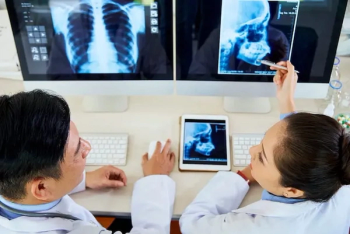
Increasing Breast Cancer Awareness, Prevention
Radiologists can do more to increase awareness about breast cancer.
Another October has rolled around and we are immersed in all the various “pink” campaigns to increase breast cancer awareness and the value of mammography for early detection of this common disease. Many of us will wear pink, make public appearances, have different speaking engagements or be interviewed on radio or television. Many Americans will contribute millions of dollars to any number of different fund-raising activities for breast cancer research. As a former supervising radiologist for the mammography department, I willingly volunteered for these duties for many years. I’m sure hundreds (or thousands) of radiologists have done the same over the years. Kudos to all of you for your efforts!
However, I recently got to thinking specifically about this perennial phenomenon and more generally about this disease. The American Cancer Society still says that the chance of a woman getting breast cancer in her lifetime is one out of eight. Despite decades of experience and improvements in imaging techniques, the incidence of breast cancer hasn’t changed over the past three decades. Clearly early detection is critical, but come on colleagues, is that the best we (in medicine) can do?
While we may lack understanding of the specific cause of this disease, the argument that we don’t know how to prevent breast cancer is both specious and ubiquitous. It is easy to sit back and say “We just don’t know what causes breast cancer, so make sure you get your annual mammogram so we can find it early.” For years that is what many of us have done and continue to do. Our female patients and, particularly, the women in our lives deserve better.
There are a number of things that we, as radiologists, can do to aid in prevention. Because of our role at the forefront of breast cancer detection, we are superbly positioned to increase patient (and public) awareness of not only the benefits of early detection through mammography, but also prevention of the disease in the first place. With respect to prevention, we should be speaking out whenever we can, rather than acquiescing. We should promote healthy lifestyle changes such as maintaining proper weight control and regular intentional exercise, reducing processed food intake, avoidance of GMO products, and increasing dietary consumption of turmeric/curcumin and omega-3 fatty acids.[[{"type":"media","view_mode":"media_crop","fid":"53297","attributes":{"alt":"Breast imaging","class":"media-image media-image-right","id":"media_crop_6547036533927","media_crop_h":"0","media_crop_image_style":"-1","media_crop_instance":"6644","media_crop_rotate":"0","media_crop_scale_h":"0","media_crop_scale_w":"0","media_crop_w":"0","media_crop_x":"0","media_crop_y":"0","style":"height: 170px; width: 170px; border-width: 0px; border-style: solid; margin: 1px; float: right;","title":"©karelnoppe/Shutterstock.com","typeof":"foaf:Image"}}]]
However, recent high quality clinical investigation trials1,2 have revealed that the current best method of breast cancer prevention is through proper maintenance of therapeutic serum concentrations of 25-hydroxyvitamin D which resulted in striking, statistically significant prevention of breast cancer in the study groups. This prevention is most easily accomplished by inexpensive dietary supplementation with vitamin D-3. However, regular blood level testing is necessary since there can be notable variations in serum concentrations even between individuals taking the same dose.
In radiology, many of us have taken pride in diagnosing a breast cancer in its earliest stage. How much more impactful can we be if we could prevent it from developing in the first place? Beginning this October in Breast Cancer Awareness Month, I encourage all radiologists to get the word out to our patients and referring providers about breast cancer prevention as well.
References:
Lappe J, Travers-Gustafson D, Davies K, Recker R, et al. Am J Clin Nutr 2007;85:1586-1591. Mohr S, Gorham E, Kim J, et al. Anticancer Res 2014;34:1163-1166.
Newsletter
Stay at the forefront of radiology with the Diagnostic Imaging newsletter, delivering the latest news, clinical insights, and imaging advancements for today’s radiologists.



























